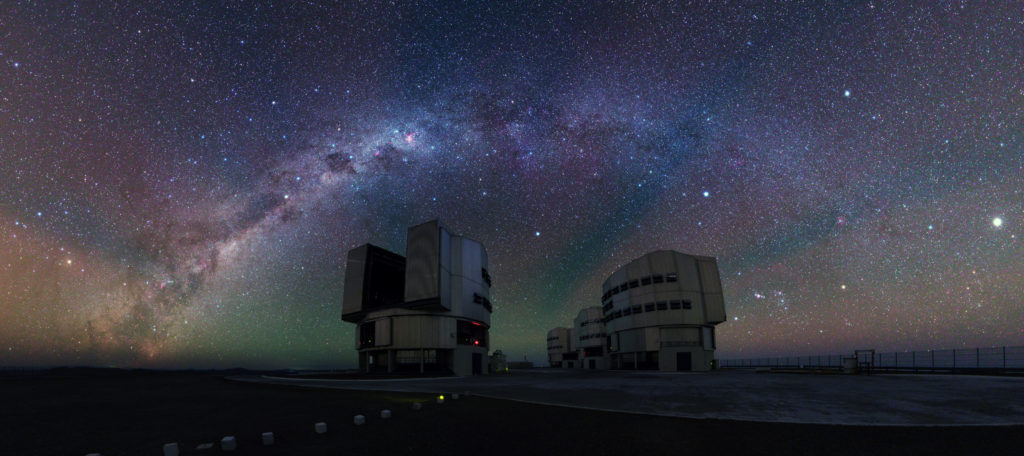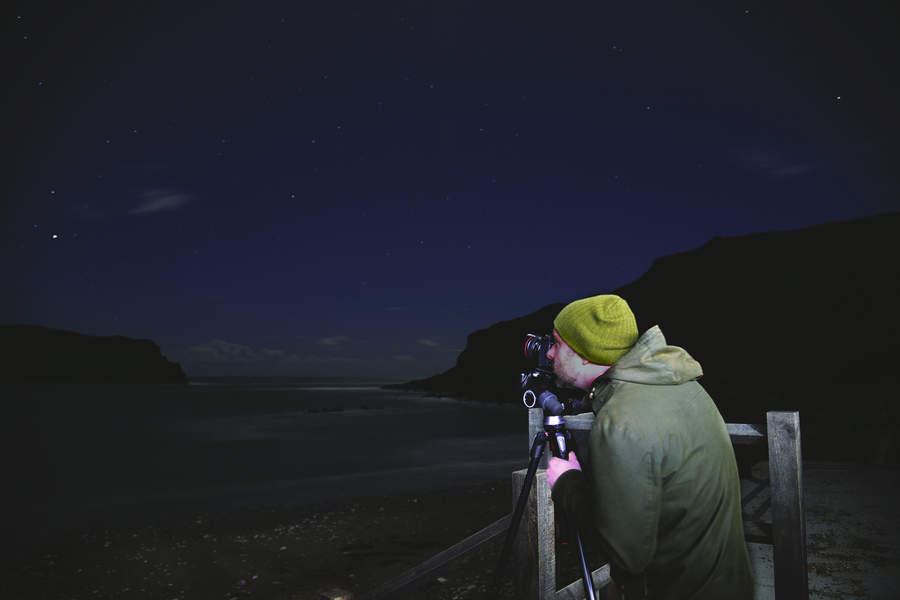What is airglow?
by Ailsa Harvey · 18/11/2019
The science behind the phenomena that causes the sky to glow in a rainbow of colours

Airglow is a photochemical reaction in the Earth’s atmosphere caused by electronically excited atoms, molecules and ions that react to ultraviolet radiation from the Sun. When these components return to their normal state, they release energy in the form of visible and infrared light. What we see as a result of this is usually a green glow.
Although the glow is present at all layers of the atmosphere, it’s only visible across a narrow band that is six to ten kilometres wide and around 85 to 95 kilometres high into the atmosphere. Below 85 kilometres, the atoms and molecules collide more readily as they’re more concentrated, so their energy is released sooner.
Above 95 kilometres, the atmosphere’s density is too low for the atoms to collide enough. The three types of airglow – dayglow, twilightglow and nightglow – all form in
different ways. Dayglow is produced when molecules in the daylight atmosphere absorb sunlight and gain excess energy. As they become excited they release the energy as light at the same or a slightly lower frequency as the light they absorbed, but we can’t see it because it is much dimmer than daylight.
The difference with twilightglow is that only the upper atmosphere is lit by the Sun, so the light is visible to the naked eye because we and the rest of the atmosphere are in darkness. Since no sunlight shines on the nighttime atmosphere, nightglow is very different. As such, chemiluninescence is responsible for the glowing atmosphere after dark.
Viewing airglow

The best way to view airglow is from the International Space Station (ISS) when it is
orbiting over the night side of Earth. From here, airglow will look like a thin band because the ISS is viewing the atmosphere at a shallow angle, so the airglow layer’s relative visibility is therefore increased.
However, most of us don’t have access to the ISS, so how do we increase our chances of catching a glimpse of this phenomenon? The most effective way is to take a long-exposure photograph of a clear, dark night sky. As long as you aim your camera around ten to 20 degrees above the horizon at an area of sky that is free from light pollution, you should be able to capture airglow.
Looking for a great Christmas present? Subscribe to How It Works from just £7.50
This article was originally published in How It Works issue 97, written by Steve Wright
For more science and technology articles, pick up the latest copy of How It Works from all good retailers or from our website now. If you have a tablet or smartphone, you can also download the digital version onto your iOS or Android device. To make sure you never miss an issue of How It Works magazine, subscribe today!





